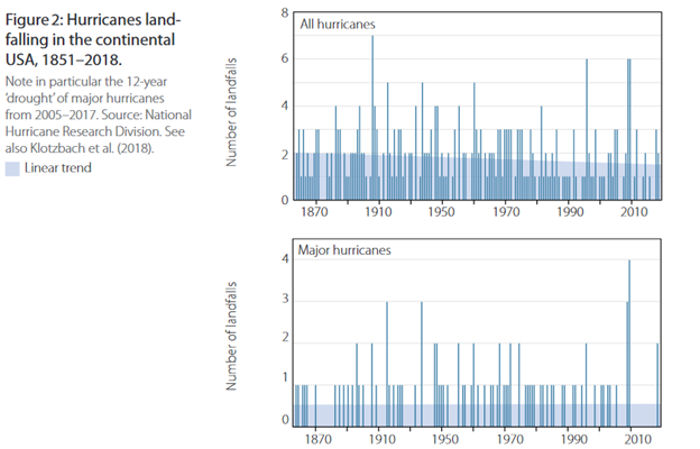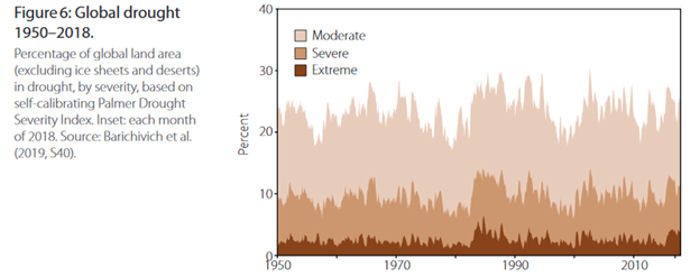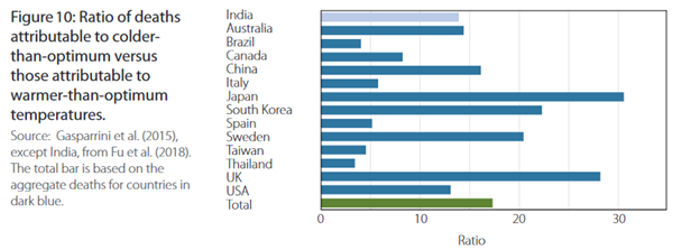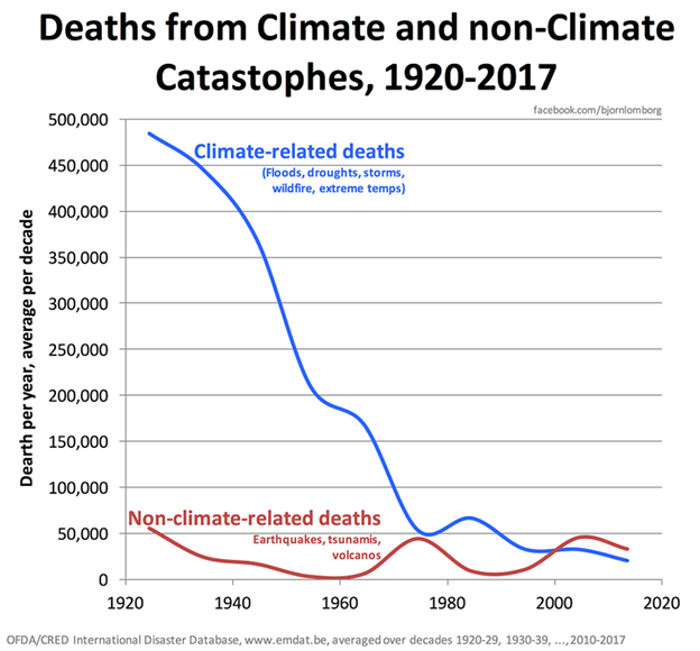Weather Events
- By:
- Edward A. Reid Jr.
- Posted On:
- Apr 20, 2021 at 3:00 AM
- Category
- Climate Change
There is a strong and growing effort to attribute individual weather events and changes in the frequency and intensity of individual weather events to climate change. Dr. Roger Pielke, Jr., Bjorn Lomborg, Dr. Joseph D’Aleo and others have published numerous essays disputing these efforts. The graphs developed by these authors and others have been assembled into a new book, IMPACTS OF CLIMATE CHANGE,PERCEPTION AND REALITY by Dr. Indur M. Goklany.
Heat waves, at least in the US, where longer term data are available, have declined significantly.

Tropical cyclones have decreased in total numbers, though there is no trend in the number of major tropical cyclones.

There is also no obvious trend in the Accumulated Cyclone Energy, the combination of event frequency and intensity.

Strong tornados have also declined in frequency, though total reported tornadoes have increased as the result of satellite observations detecting smaller tornadoes which might otherwise not have been detected or reported.

Droughts are also decreasing slightly, though there is large year-to-year variability.


Annual death rates from extreme weather events have decreased dramatically, largely as the result of improved prediction and communication as well as efforts at adaptation.

Cold weather events continue to be a far greater cause of death than warm weather events worldwide.

Global economic losses resulting from severe weather events continue to decline as a percentage of global GDP. The total loss from these events continues to grow, however, as increased infrastructure investments are made in areas of known weather risk.

Areas destroyed by wildfires continue decline, even in the face of continued poor forest management practices.

Crop yields and food supply have continued to increase as the result of a number of factors including improved farming practices, the broader availability of synthetic fertilizers and the effects of CO2 fertilization.

Finally, deaths attributable to climate catastrophes declined precipitously until the 1970s and continue to decline, largely as the result of improved weather prediction and notification systems and adaptation efforts.

The above suggests that climate change is not causing or adversely affecting extreme weather events or exacerbating their results. It certainly belies the claims of “climate crisis”, “climate emergency” and “existential threat”.


